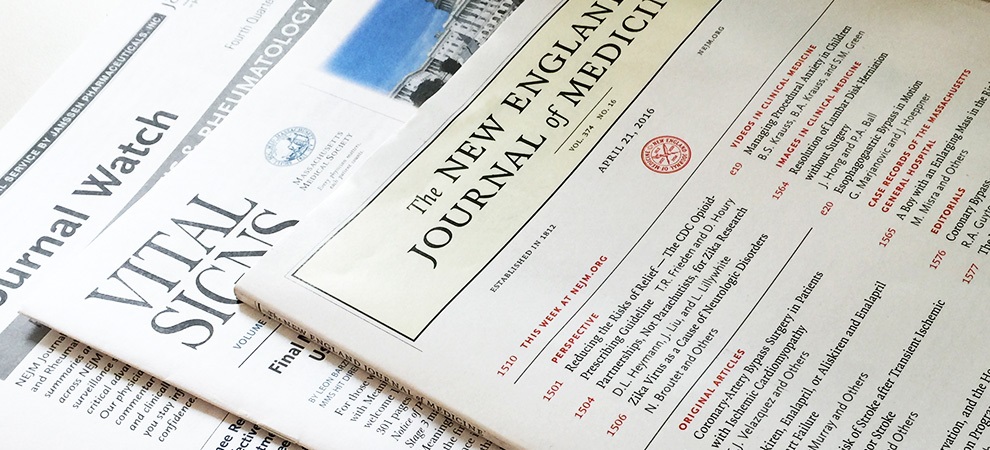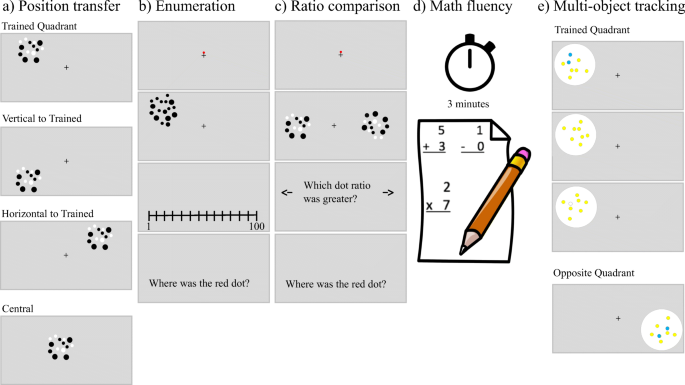Our Publications
Electronic versions are provided as a professional courtesy to ensure timely dissemination of academic work for individual, noncommercial purposes. Copyright and all rights therein reside with the respective copyright holders, as stated within each paper. These files may not be reposted without permission.

Books
Simner, J. & Hubbard, E.M. (2013/2018) The Oxford Handbook of Synesthesia. New York, NY: Oxford University Press. The Oxford Handbook of Synesthesia was one of the British Medical Association’s Highly Commended Book Award Winners in the Psychiatry Category for 2014.

Publications by Year
2024
Starling-Alves, I., Gomides, M.R.A., Ribeiro, D.O., Haase, V.G. & Hubbard, E.M. (2024). From one half to 12th: acquisition of fraction writing in adult education program students and children. Journal of Numerical Cognition Preprint: https://osf.io/7vkmt doi: 10.5964/jnc.11475
2022
Starling-Alves, I., Wronski, M.R. & Hubbard, E.M. (2022). Math anxiety differentially impairs symbolic, but not nonsymbolic, fraction skills across development. Annals of the New York Academy of Sciences 1509(1):113-129. doi: 10.1111/nyas.14715. Epub 2021 Nov 15.
2021
Hubbard, E.M. & Matthews, P.G. (2021) Ratio-based perceptual foundations for rational numbers, and perhaps whole numbers, too? Behavioral and Brain Sciences 44:e192. doi: 10.1017/S0140525X2100114X.
2020
Kalra, P.B., Hubbard, E.M. & Matthews, P.G. (2020). Taking the relational structure of fractions seriously: Relational reasoning predicts fraction knowledge in elementary school children. Contemporary Educational Psychology 62:101896. doi: 10.1016/j.cedpsych.2020.101896.
Kalra, P.B., Binzak, J.V., Matthews, P.G. & Hubbard, E.M. (2020). Symbolic fractions elicit an analog magnitude representation in school-age children. Journal of Experimental Child Psychology 195:104844. doi: 10.1016/j.jecp.2020.104844
Binzak, J.V. & Hubbard, E.M. (2020). No calculation necessary: Accessing rational magnitudes through fraction notation. Cognition, 199: 104219 org/10.1016/j.cognition.2020.104219

2019
Colling, L. et al including Toomarian, E.Y. and Hubbard, E.M. author order to be alphabetical after first author (2019). A multilab preregistered replication of the attentional SNARC effect. Advances in Methods and Practices in Psychological Science OSF: https://osf.io/he5za/
Toomarian, E.Y., Gosavi, R.S., Hubbard, E.M. (2019). Implicit and explicit spatial-numerical representations diverge in number-form synesthetes. Consciousness and Cognition. 75: 102806 doi:10.1016/j.concog.2019.102806
Toomarian, E.Y. & Hubbard, E.M. (2019). A SNARC in the mind or in the hand? A response to Shaki & Fischer. Neuroscience and Biobehavioral Reviews doi: 10.1016/j.neubiorev.2018.11.018
Toomarian, E.Y., Meng, R. & Hubbard, E.M. (2019). Individual differences in implicit and explicit spatial processing of fractions Frontiers in Psychology, 10:596. doi: 10.3389/fpsyg.2019.00596
Cochrane, A.*, Cui, L.*, Hubbard, E.M. & Green, C. S. (2019). Long-term training of the approximate number system. Attention, Perception & Psychophysics, 81(3):621–636. doi: 10.3758/s13414-018-01636-w *Co-first authors.
Gosavi, R.S. & Hubbard, E.M. (2019). A colorful advantage in iconic memory. Cognition, 187:32-37 doi: 10.1016/j.cognition.2019.02.009

2018
Toomarian, E.Y. & Hubbard, E.M. (2018). On the genesis of spatial-numerical associations: Evolutionary and cultural factors co-construct the mental number line. Neuroscience and Biobehavioral Reviews, 90:184–199 doi: 10.1016/j.neubiorev.2018.04.010
Toomarian, E.Y. & Hubbard, E.M. (2018). The fractions SNARC revisited: Processing Fractions on a Consistent Mental Number Line. Quarterly Journal of Experimental Psychology, 71(8) 1761–1770 10.1080/17470218.2017.1350867
2017
Sidney, P.G., Thompson, C.A., Matthews, P.G. & Hubbard, E.M. (2017). From continuous magnitudes to symbolic numbers: The centrality of ratio. Behavioral and Brain Sciences, 40:e190 doi:10.1017/S0140525X16002284
Matthews P.G. & Hubbard EM. (2017). Making space for spatial proportions. Journal of Learning Disabilities, 50(6):644-647. DOI: 10.1177/0022219416679133

2016
Hubbard, E.M., Matthews, P.G. & Samek, A. (2016). Using online compound interest tools to improve financial literacy. Journal of Economic Education, 47(2):106-120. DOI:10.1080/00220485.2016.1146097
Matthews, P.M., Lewis, M.R. & Hubbard, E.M. (2016). Individual differences in nonsymbolic ratio processing predict symbolic math performance. Psychological Science, 27(2):191-202. doi:10.1177/0956797615617799

2015
Lewis, M.R., Matthews, P.M. & Hubbard, E.M. (2015). Neurocognitive Architectures and the Nonsymbolic Foundations of Fractions Understanding. In D.B. Berch, D.C. Geary, and K.M. Koepke (Eds.) Development of Mathematical Cognition-Neural Substrates and Genetic Influences. (p. 141-160) Elsevier. ISBN: 978-0128018712.
Simner, J. Carmichael, D.A, Hubbard, E.M., Morris, Z & Lawrie, S.M. (2015). Rates of white matter hyperintensities compatible with the radiological profile of multiple sclerosis within self-referred synesthete populations. Neurocase. 21(3):322-330 (DOI:10.1080/13554794.2014.892625).
2014
Viarouge, A., Hubbard, E.M. & Dehaene, S. (2014). The organization of spatial reference frames involved in the SNARC effect. Quarterly Journal of Experimental Psychology. 67(8):1484-1499. (DOI:10.1080/17470218.2014.897358)
Oberman, L.M., Hubbard, E.M. & McCleery, J.P. (2014). Associative learning alone is insufficient for the evolution and maintenance of the human mirror neuron system. Commentary on Cook et al., Mirror Neurons: From Origin to Function. Behavioral and Brain Sciences. 37(2): 212 – 213. (doi: 10.1017/S0140525X13002422).
Viarouge, A., Hubbard, E.M. & McCandliss, B.D. (2014). The cognitive mechanisms of the SNARC effect: An individual differences approach. PLOS One. 9(4): e95756 (doi: 10.1371/journal.pone.0095756).
Hubbard, E.M., Brang, D. & Ramachandran, V.S. (2014). The cross-activation theory at ten. In M. Josè De Cordoba, D. Riccò & S. Day (eds.). Synaesthesia: Theoretical, Artistic and Scientific Foundations, Granada, Spain, July 2014, pp. 176-196. Print Edition, ISBN: 978-84-939054-6-0, eBook Edition, ISBN: 978-84-939054-9-1.
2013
Oberman, L.M., McCleery, J.P., Hubbard, E.M., Bernier, R. Wiersema, J.R., Raymaekers, R. & Pineda, J.A. (2013). Developmental changes in mu suppression to observed and executed actions in autism spectrum disorders. Social Cognitive and Affective Neuroscience. 8(3):300-304. (doi:10.1093/scan/nsr097).
Hubbard, E.M. (2013). Synaesthesia and Functional Imaging. In J. Simner. & E.M. Hubbard (Eds). The Oxford Handbook of Synaesthesia. Oxford, UK: Oxford University Press. ISBN 9780199603329 (HB).
Simner, J. & Hubbard, E.M. (2013). Synaesthesia in School–aged Children. In J. Simner. & E.M. Hubbard (Eds). The Oxford Handbook of Synaesthesia. Oxford, UK: Oxford University Press. ISBN 9780199603329 (HB).
Hubbard, E.M. (2013). Synesthesia [1000 word entry]. In H. Pashler (Ed.) Encyclopedia of the Mind. (p. 725–727) Thousand Oaks, CA. SAGE Reference.

2012
Hubbard, E.M., Brang, D. & Ramachandran, V.S. (2012) Diez años de la teoría de la interactivación. in M. José De Córdoba & Dina Riccò (Eds.) Sinestesia: Los Fundamentos Teóricos, Artísticos y Sientíficos. Granada: Ediciones Fundación Internacional Artecittà. ISBN–13: 978–84–939054–1–5.
2011
Hubbard, E.M., Brang, D. & Ramachandran. V.S. (2011). The cross-activation theory at 10. Journal of Neuropsychology. 5(2):152-177. (doi:10.1111/j.1748-6653.2011.02014).
2010
Viarouge, A., Hubbard, E.M., Dehaene, S. & Sackur, J. (2010). Number line compression and the illusory perception of random numbers. Experimental Psychology. 57(6):446-454. (doi:10.1027/1618-3169/a000055)
Brang, D., Hubbard, E.M., Coulson, S., Huang, M. & Ramachandran, V.S. (2010). Magnetoencepalography reveals early activation of V4 in grapheme-color synesthesia. Neuroimage. 53(1):268–274 (doi:10.1016/j.neuroimage.2010.06.008).
Williams, L.E., Light, G.A., Hubbard, E.M., Braff, D.L. & Ramachandran,V.S. (2010). Superior size-weight illusion performance in patients with schizophrenia: Evidence for deficits in forward models. Schizophrenia Research. 121(1-3):101-106 (doi:10.1016/j.schres.2009.10.021). Supplementary Materials
Bertelletti, I., Hubbard, E.M. & Zorzi, M. (2010). Implicit versus explicit interference effects in a number-color synesthete. Cortex. 46(2): 170–177 (doi:10.1016/j.cortex.2008.12.009).

2009
Hubbard, E.M., Ranzini, M., Piazza, M. & Dehaene, S. (2009). What information is critical to elicit interference in number-form synesthesia? Cortex: Special Section on Synaesthesia and Visuo-spatial Forms, 45(10):1200-1216 (doi:10.1016/j.cortex.2009.06.011).
Ranzini, M., Dehaene, S., Piazza, M. & Hubbard, E.M. (2009). Neural mechanisms of attentional shifts due to irrelevant spatial and numerical cues. Neuropsychologia, 47(12):2615-2624 (doi:10.1016/j.neuropsychologia.2009.05.011).
Knops, A., Thirion, B., Hubbard, E.M., Michel, V. & Dehaene, S. (2009). Recruitment of an area involved in eye movements during mental arithmetic. Science, 324(5934):1583–1585 (doi:10.1126/science.1171599). Supplementary Materials
Hubbard, E. M., Piazza, M., Pinel, P. & Dehaene, S. (2009). Numerical and spatial intuitions: A role for posterior parietal cortex? in L. Tommasi, L. Nadel and M.A. Peterson (Eds.) Cognitive Biology: Evolutionary and Developmental Perspectives on Mind, Brain and Behavior. (pp. 221–246). Cambridge, MA: MIT Press.
2008
Hubbard, E.M., Diester, I., Cantlon, J.F., Ansari, D., van Opstal, F. & Troiani, V. (2008). The evolution of numerical cognition: from number neurons to linguistic quantifiers. Journal of Neuroscience, 28(46):11819–11824 (doi:10.1523/jneurosci.3808-08.2008).
Hubbard, E.M. (2008). Synaesthesia: The sounds of moving patterns. Current Biology, 18(15):R657-R659 (doi: 10.1016/j.cub.2008.06.035).
This is a Dispatch on Saenz and Koch (2008). The sound of change: visually induced auditory synesthesia. Current Biology, 18(15): R650-R651 in which they identified a previously unreported form of synesthesia in which visual motion elicits auditory percepts. In this Dispatch, I discuss the implications of these findings for our understanding of the mechanisms whereby the brain integrates sight and sound more broadly.
2007
Hubbard, E.M. (2007). A real red letter day. Nature Neuroscience. 10(6):671-672 (doi: 10.1038/nn0607-671).
This is a News and Views on Rouw and Scholte (2007).Increased structural connectivity in grapheme-color synesthesia. Nature Neuroscience, 10(6):792 – 797. They used diffusion tensor imaging to demonstrate increased connectivity underlies synesthetic experiences, and individual differences between synesthetes, nicely confirming a number of our predictions (see e.g., Hubbard and Ramachandran, 2005; Ramachandran and Hubbard, 2001, below).
Hubbard, E.M. (2007). Neurophysiology of synesthesia. Current Psychiatry Reports. 9(3): 193-199 (10.1007/s11920-007-0018-6).
2006
Simner, J. & Hubbard, E.M. (2006) Variants of synesthesia interact in cognitive tasks: Evidence for implicit associations and late connectivity in cross-talk theories Neuroscience, 143(3):805-814 (doi:10.1016/j.neuroscience.2006.08.018).
Thirion, B., Duchesnay, E., Hubbard, E.M., Dubois, J., Poline, J.-B., Lebihan, D. & Dehaene, S. (2006). Inverse retinotopy: Inferring the visual content of images from brain activation patterns. Neuroimage. 33(4):1104-1116 (10.1016/j.neuroimage.2006.06.062).
Hubbard, E.M., Manohar, S. & Ramachandran, V.S. (2006). Contrast affects the strength of synesthetic colors. Cortex: Special Issue on Synesthesia (Jason Mattingley and Jamie Ward, Eds.), 42(2): 184-194 (doi:10.1016/S0010-9452(08)70343-5).

2005
Hubbard, E.M. & Ramachandran, V.S. (2005). Neurocognitive mechanisms of synesthesia. Neuron, 48(3): 509-520 (doi:10.1016/j.neuron.2005.10.012).
Hubbard, E.M., Piazza, M. Pinel, P. & Dehaene, S. (2005). Interactions between numbers and space in parietal cortex. Nature Reviews Neuroscience, 6(6): 435-448. (doi:10.1038/nrn1684)
Hubbard, E.M., Arman, A.C., Ramachandran, V.S. & Boynton, G.M. (2005). Individual differences among grapheme-color synesthetes: Brain-behavior correlations.Neuron, 45(6): 975-985 (doi:10.1016/j.neuron.2005.02.008). Supplementary Materials
Also see the very nice commentary on our findings by Mike Dixon and Dan Smilek.The importance of individual differences in grapheme-color synesthesia. Neuron,45(6):821-823.
Secondary summaries of our work have appeared in Nature Reviews Neuroscience, Lancet Neurology and Clinical Neurology News
Ramachandran, V.S. & Hubbard, E.M. (2005). Hearing colors, tasting shapes. Scientific American Mind, 16-23.
Oberman, L.M., Hubbard, E.M., McCleery, J.P. Altschuler, E.L., Ramachandran, V.S. & Pineda, J.A. (2005). EEG evidence for mirror neuron dysfunction in autism spectrum disorders. Cognitive Brain Research, 24(2): 190-198. (doi:10.1016/j.cogbrainres.2005.01.014)

2004
Hubbard, E.M. & Ramachandran, V.S. (2004). The size-weight illusion, emulation, and the cerebellum. Behavioral and Brain Sciences, 27(3): 407-408 (doi: 10.1017/S0140525X04320091).
This is a commentary on Grush, R. (2004). The emulation theory of representation: Motor control, imagery, and perception. Behavioral and Brain Sciences.
2003
Ramachandran, V.S. & Hubbard, E.M. (2003). The phenomenology of synaesthesia. Journal of Consciousness Studies, 10(8): 49–57.
Hubbard, E.M. & Ramachandran, V.S. (2003). Refining the experimental lever: A reply to Shannnon and Pribram.Journal of Consciousness Studies,9(3):77-84.
This article is a reply to two commentaries on our original JCS paper, Synesthesia: A window into perception thought and language (see below). For the original commentaries, see Shannon Commentary and Pribram Commentary.
Ramachandran, V.S. & Hubbard, E.M. (2003). Hearing colors, tasting shapes. Scientific American, 52-59.
Hubbard, E.M. (2003). A discussion and review of Uttal (2001). Cognitive Science Online,1(1):22-33.
2001
Ramachandran, V.S. & Hubbard, E.M. (2001b). Synaesthesia: A window into perception, thought and language. Journal of Consciousness Studies, 8(12), 3 – 34.
Ramachandran, V.S. & Hubbard, E.M. (2001a). Psychophysical investigations into the neural basis of synaesthesia. Proceedings of the Royal Society of London, B. 268, 979-983 (10.1098/rspb.2000.1576).
2000
Anderson, D.I, Hubbard, E.M., Campos, J.J, Barbu-Roth, M.A., Witherington, D. & Hertenstein, M.J. (2000). Probabilistic epigenesis, experience, and psychological development in infancy. Infancy. 1(2), 245-251 (doi: 10.1207/S15327078IN0102_6).
Campos, J.J., Anderson, D.I, Barbu-Roth, M.A., Hubbard, E.M., Hertenstein, M.J, & Witherington, M. (2000) Travel broadens the mind. Infancy, 1(2): 149-219 (doi: 10.1207/S15327078IN0102_1).